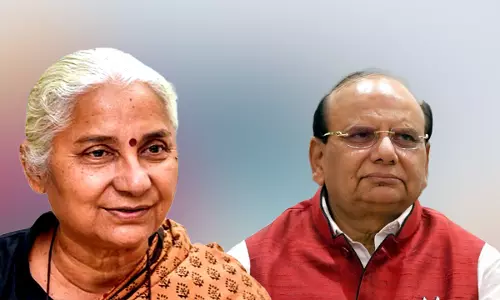S.134 Evidence Act | Testimony Of Single Eyewitness Can Form Basis For Conviction Provided It Is Of Sterling Quality: Madhya Pradesh High Court

The Madhya Pradesh High Court recently reiterated that the testimony of a single eyewitness can form the basis for conviction, provided that it is of sterling quality. The division bench comprising Justices Sujoy Paul and Prakash Chandra Gupta observed- We find no difficulty in accepting the legal principle that in view of section 134 of Indian Evidence Act, the statement of single...
The Madhya Pradesh High Court recently reiterated that the testimony of a single eyewitness can form the basis for conviction, provided that it is of sterling quality.
The division bench comprising Justices Sujoy Paul and Prakash Chandra Gupta observed-
We find no difficulty in accepting the legal principle that in view of section 134 of Indian Evidence Act, the statement of single eye witness can form basis for conviction. In principle, there is no reason to discard this contention of learned Government counsel. However, the entire legal journey on this aspect shows that such single eyewitness must be of sterling quality. If eyebrows can be raised on such statement, it is not safe to record or confirm conviction based thereupon.
Facts of the case were that the Appellant was accused and later convicted for murdering a woman. His conviction was primarily based on the testimony of the Complainant as well as his statement under Section 27 of the Evidence Act. The Complainant was the sister of the deceased and the single eyewitness in the case. Aggrieved with his conviction under Section 302 IPC, the Appellant preferred an appeal before the Court.
The Appellant submitted that the testimony of the sole eyewitness in the case was marred with contradictions. It was further pointed out that statements given by several other witnesses did not corroborate the prosecution story. Also contesting the validity of his statement under Section 27 of the Evidence Act, the Appellant asserted that the incriminating evidence discovered against him was inadmissible in the eye of law since there was nothing on record to prove that at the time of discovery, he was in the custody of the police.
Per contra, the State argued that the testimony of the eyewitness was reliable and in sync with the prosecution story. It was also submitted that the statement of the Appellant under Section 27 of the Evidence Act was unblemished.
Examining the submissions of parties and the trial Court record, the High Court found merit in the arguments put forth by the Appellant. Scrutinizing the statement given by the Complainant, the Court observed that her testimony did not inspire its confidence. Noting that she was the sole eyewitness in the case, the Court opined that her statement was not up to the mark so as to form the basis for conviction of the Appellant.
The Court then turned its attention to the statement of the Appellant under Section 27 of the Evidence Act. It observed that the prosecution had miserably failed in establishing that at the time of discovering incriminating material against the Appellant, he was in custody. Therefore, the Court noted that it could not give its stamp of approval to the conviction of the accused based on defective recovery-
Since prosecution has miserable failed to establish that at the time of recovery of 'gamchha' the appellant was in custody, the recovery cannot be said to be in consonance with Section 27 of the Indian Evidence Act. At the cost of repetition, sole eye witness Kavita (PW-1) did not depose that when she had seen the appellant coming out of her house, he was wearing any 'gamchha'. Since recovery of 'gamchha' is not proved, the availability of blood stains on it fades into insignificance. It is noteworthy that even place of arrest of appellant is highly doubtful. The arrest memo shows that the appellant was arrested from Amarwara whereas Kavita (PW-1) and S.S. Rajput, Sub Inspector (PW-5) deposed that ASI Tiwari arrested the appellant from Sagar.
With the aforesaid observations, the Court found it fit to acquit the Appellant by giving him the benefit of doubt. Accordingly, the appeal was allowed and his conviction was set aside.
Click Here To Read/Download Judgment




